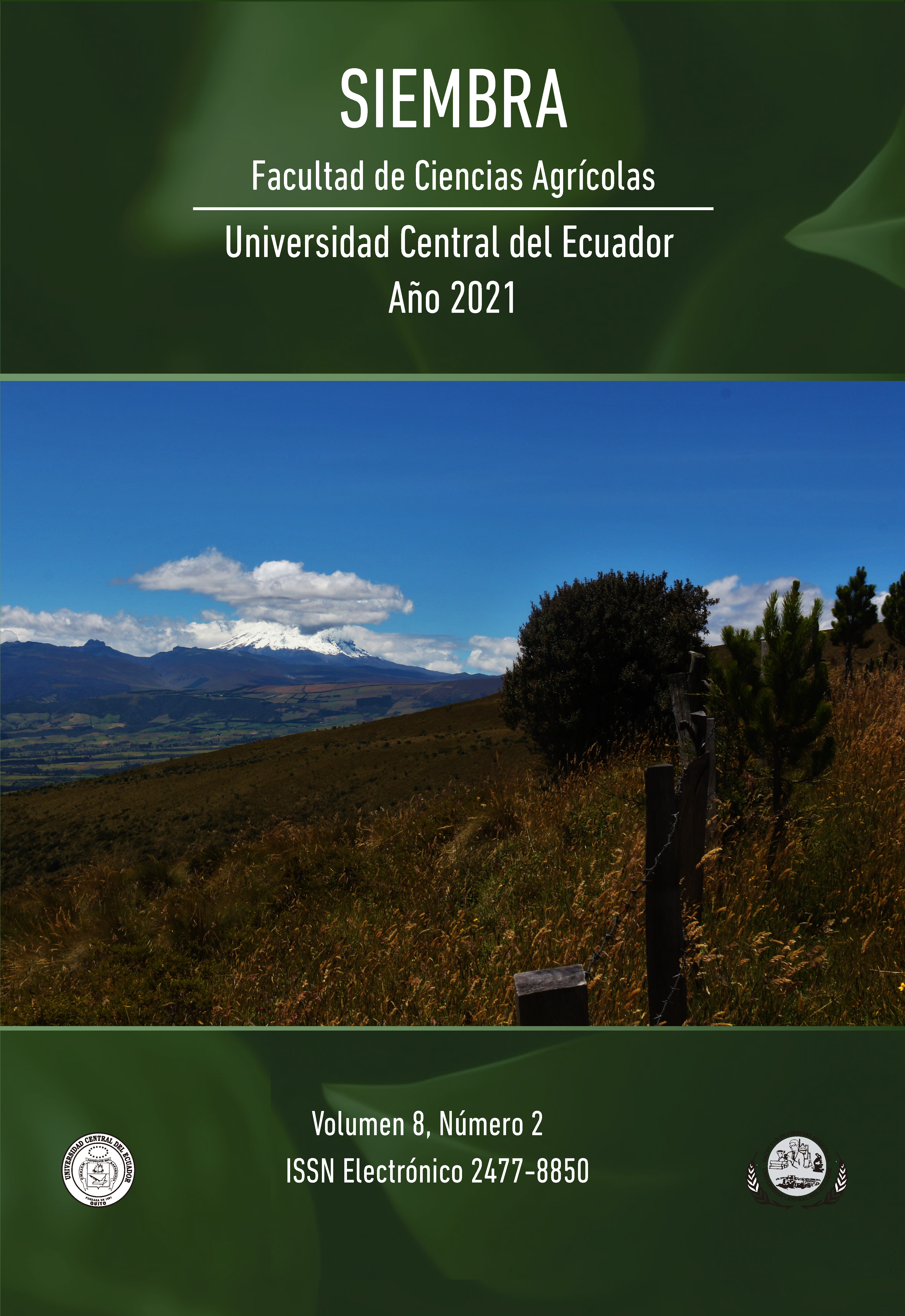Post-Covid-19 tourist reactivation of protected natural areas and its impact on improving the experience of tourists in Ecuador
Main Article Content
Abstract
In Ecuador there are 61 protected areas corresponding to 20.35 % of the national territory. This research aims to define the tourist characterization, establish the profile of the visitor around the motivations and preferences of infrastructure and post-Covid 19 security to improve the experience of tourists in natural spaces. Visitors between the ages of 19 and 35 come to natural areas as a family, motivated by natural attractions (95 %). To improve the experience of tourists, some strategies are established based on their perception and motivations. The information is managed by social networks (85 %), to access food and accommodation services. They prefer activities such as nature tourism and ecotourism (78 %), with facilities such as trails, bicycle paths and hygienic services, as well as biosecurity measures with the availability of dispensers, disinfectants, and personal hygiene supplies (73 %) and the presence of personnel with first aid abilities. Adapting security and biosecurity strategies improves the expectation and experience of tourists in protected areas in Ecuador.
Downloads
Metrics
Article Details

This work is licensed under a Creative Commons Attribution-NonCommercial 4.0 International License.
The authors who publish in Siembra know and accept the following conditions:
- Authors retain the copyright and grant Siembra the right of first publication of the work, under the Creative Commons Attribution License. Third parties are allowed to use what has been published as long as they refer to the author or authors of the work and its publication in this journal.
![]() This content is licensed under a Creative Commons Attribution-Noncommercial 4.0 International (CC BY-NC 4.0).
This content is licensed under a Creative Commons Attribution-Noncommercial 4.0 International (CC BY-NC 4.0).
- Authors maintain the copyright and guarantee Siembra the right to publish the manuscript through the channels it considers appropriate.
- Authors may establish on their own additional agreements for the non-exclusive distribution of the version of the work published in Siembra, acknowledging their initial publication in the same, such as in institutional repositories.
- Authors are authorized to disseminate their work electronically once the manuscript is accepted for publication.
References
Acuerdo Ministerial N° 005 del 2019. Declárese a la “Cordillera Oriental del Carchi” como área protegida del Subsistema Autónomo Descentralizado e incorpórese al Sistema Nacional de Áreas Protegidas del Ecuador. 03 de julio de 2019.
Asociación Ecuatoriana de Ecoturismo y Aventura. (2012). Turismo en áreas naturales con gestión comunitaria. Ministerio del Ambiente del Ecuador.
Borrini-Feyerabend, G., Dudley, N., Jaeger, T., Lassen, B., Pathak Broome, N., Phillips, A., & Sandwith, T. (2014). Gobernanza de áreas protegidas: de la comprensión a la acción, N.o 20 de la Serie Directrices para buenas prácticas en áreas protegidas. Unión Internacional para la Conservación de la Naturaleza [UICN].
Cabanilla, E., Lastra, X., Molina, E., Pazmiño, J., & Yánez, A. (2020). Encuesta sobre el comportamiento de los residentes en Ecuador que visitan Quito. Empresa Pública Metropolitana de Gestión de Destino Turístico – Quito Turismo. http://www.quito-turismo.gob.ec/descargas/LOTAIP2020/web/Perfil_residentes_EC_a_Quito-2019%20(3).pdf
Columba Zárate, K. (2013). Manual para la gestión operativa de las áreas protegidas de Ecuador (1.a ed.). Ministerio del Ambiente de Ecuador (MAE). https://www.ambiente.gob.ec/wp-content/uploads/downloads/2017/09/Manual-para-la-Gestio%CC%81n-Operativa-de-las-A%CC%81reas-Protegidas-de-Ecuador-finalr.pdf
Constitución de la República del Ecuador [Const]. 20 de octubre de 2008.
Dudley, N. (Editor) (2008). Directrices para la aplicación de las categorías de gestión de áreas protegidas. Unión Internacional para la Conservación de la Naturaleza [UICN]. https://portals.iucn.org/library/efiles/documents/PAPS-016-Es.pdf DOI: https://doi.org/10.2305/IUCN.CH.2008.PAPS.2.es
García, M., Parra, D., & Mena, P. (eds.). 2014. El país de la biodiversidad. Ministerio del Ambiente, EcoFondo y Jardín Botánico de Quito.
Ley de Áreas Naturales Protegidas. Ley No. 26834. 17 de junio de 1997 (República de Perú).
Ministerio de Turismo del Ecuador [MINTUR]. (2007). Plan estratégico de turismo sostenible para Ecuador. MINTUR.
Ministerio de Turismo del Ecuador [MINTUR]. (2020). Levantamiento de Información sobre el Comportamiento del turismo a nivel nacional dada la Nueva Normalidad generada por la Afectación del Virus COVID-19. MINTUR. https://servicios.turismo.gob.ec/descargas/Turismo-cifras/Publicaciones/DespuesCovid/Comportamiento-Covid-VERSION-FINAL_JSP.pdf
Ministerio del Ambiente [MAE]. (2015). Sistema Nacional de Áreas protegidas del Ecuador. MAE.
Ministerio del Ambiente [MAE]. (2016). Estrategia nacional de biodiversidad 2015-2030 (1.a ed.). MAE. http://maetransparente.ambiente.gob.ec/documentacion/WebAPs/Estrategia%20Nacional%20de%20Biodiversidad%202015-2030%20-%20CALIDAD%20WEB.pdf
Servicio Geológico de Estados Unidos. (2005). Thermal Activity at Norris Geyser Basin Provide Opportunity to Study Hydrothermal System. U.S. Geological Survey. https://www.usgs.gov/center-news/thermal-activity-norris-geyser-basin-provide-opportunity-study-hydrothermal-system#:~:text=Thermal%20Activity%20at%20Norris%20Geyser%20Basin%20Provide%20Opportunity%20to%20Study%20Hydrothermal%20System,-Release%20Date%3A%20December&text=In%20July%202003%2C%20Norris%20lived,part%20of%20the%20geyser%20basin
Vázquez Torres, S. M., Carvajal Hernández, C. I., & Aquino Zapata, A. M. (2010). Áreas naturales protegidas. En E. Florescano y J. Ortíz Escamilla (coord.) Atlas del patrimonio natural, histórico y cultural de Veracruz (pp. 249-274). Gobierno del Estado de Veracruz, Universidad Veracruzana. https://cdigital.uv.mx/handle/123456789/9656





